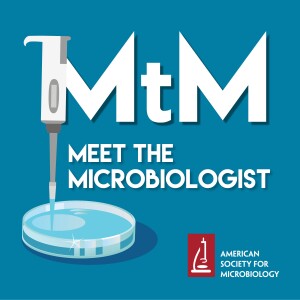
090: Using yeast to generate new chocolate and beer flavors with Kevin Verstrepen
 2018-09-06
2018-09-06
You may know that beer is fermented, but did you know making chocolate requires a fermentation step? Kevin Verstrepen discusses how his lab optimizes flavor profiles of the yeast used in this fermentation step, and explains how yeast was domesticated before microorganisms had been discovered.
Take the MTM listener survey, we want to hear from you. Thanks!
Julie’s Biggest Takeaways:
Microbes are used to ferment foods, but they do more than just add ethanol or carbon dioxide: their metabolic byproducts add flavors and aromas that are an essential part of the fermented food.
In cocoa bean fermentation, the yeast that are part of the initial fermentative microbial population control the development of the subsequent microbial populations and the quality of the final product.
How the volatile flavor compounds generated during fermentation survive the roasting step remains unclear. Heat can destroy these labile compounds, but Kevin thinks the compounds were able to survive roasting because they become embedded in lipids (fat) of the cocoa beans. Similar compounds produced during bread rising are destroyed during baking, possibly because there is less fat to protect these molecules.
Mixing data science and beer: a computer scientist in the Verstrepen lab analyzed the flavor profiles of several hundred beers, which were also analyzed by a trained tasting panel. The goal is to link the chemistry to the aroma, which requires complex algorithms due to the integration of hundreds of flavor molecules.
A spontaneous hybridization between Saccharomyces cerevisiae, the normal fermentative yeast, and S. eubayanus, a cold-tolerant yeast, resulting in a hybrid that can ferment at colder temperatures, as is required for brewing lager beers. There are 2 lineages that are used by most breweries, and while different characteristics have evolved over time, the genetic bottleneck limits characteristic diversity. The Verstrepen lab made several crosses between these two species and selected for hybrids that generated those with desirable characteristics. Molecular means can determine the offspring that are most likely to confer desired characteristics, but the commercial yeasts are not specifically genetically manipulated to this end.
Domesticated yeast have different characteristics than their wild counterparts. Domesticated yeasts have lost the ability to use certain sugars, but have gained abilities associated with their use; beer yeasts use maltose at much higher rates, for example. When the origins are traced using molecular methods, it goes back to medieval times. How to domesticate an organism that hasn’t been identified? Brewers have long transferred sediment from one batch of beer into new batches, which is how selection for human-desired characteristics began. Wine yeasts, which are not passaged but are likely inoculated from the same vineyard annually, show less domestication than the beer yeast.
More Episodes
 2019-08-15
2019-08-15
 2019-04-05
2019-04-05
 2019-02-21
2019-02-21
Create your
podcast in
minutes
- Full-featured podcast site
- Unlimited storage and bandwidth
- Comprehensive podcast stats
- Distribute to Apple Podcasts, Spotify, and more
- Make money with your podcast
It is Free
- Privacy Policy
- Cookie Policy
- Terms of Use
- Consent Preferences
- Copyright © 2015-2024 Podbean.com




